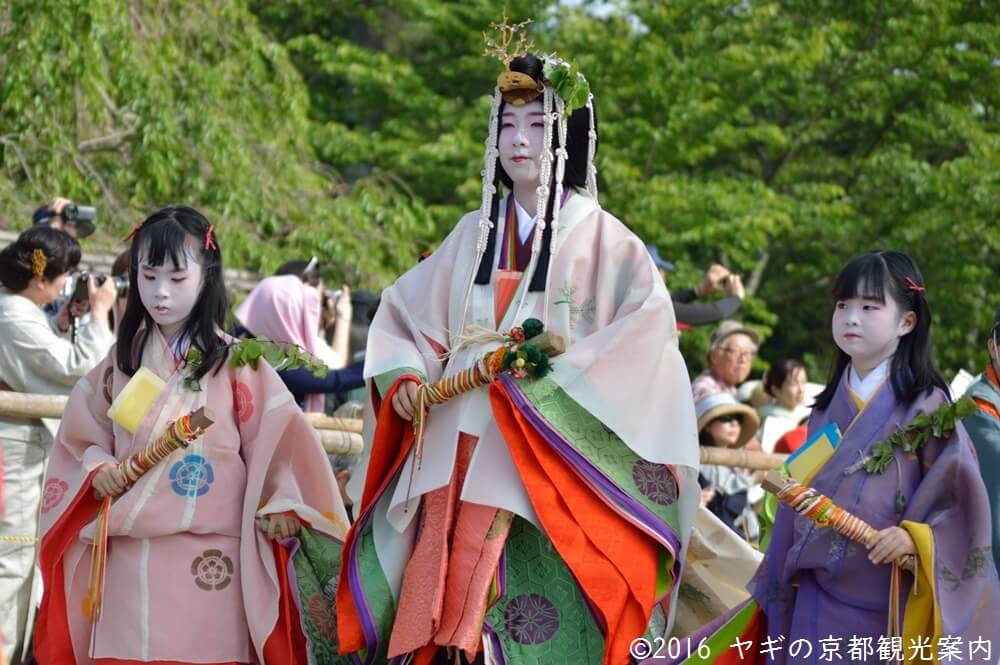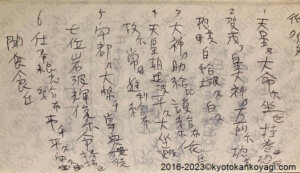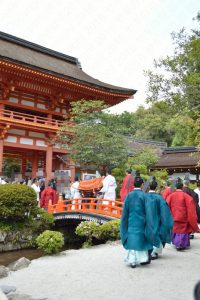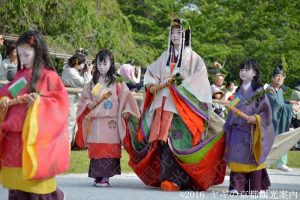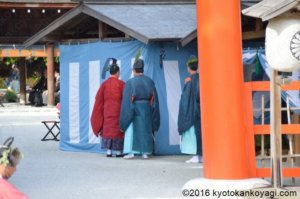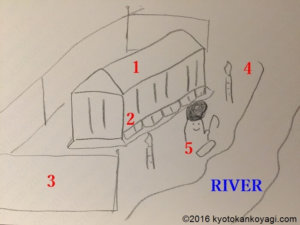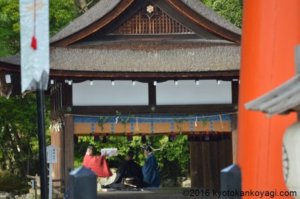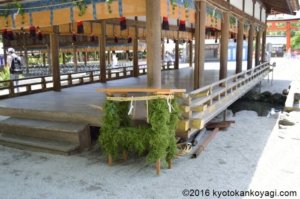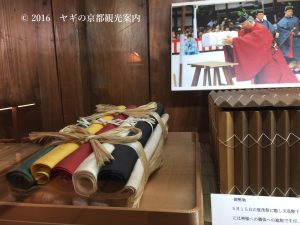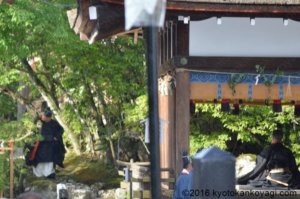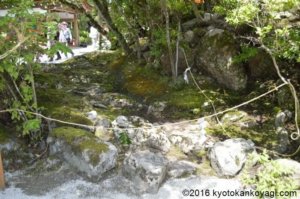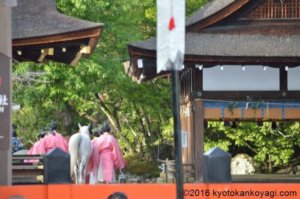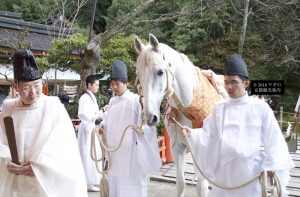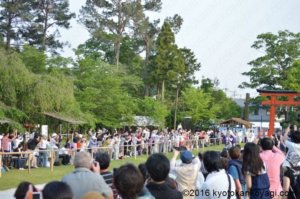THE GIST OF THIS ARTICLE
- Page 1 Schedule, What is Aoi Matsuri?
- Page 2 Saioh Dai 斎王代
- Page 3 Parade1: Chokushidai Retsu 勅使代行列
- Page 4 Parade2: Saiohdai Retsu 斎王代列
- Page 5 Shato no Gi 社頭の儀
- Page 6 Ceremonies prior to Aoi Matsuri
- Page 7 How to see the parade?
The following is the contents of this article.
Shato no gi at Kamigamo shrine
Overview
The most important thing in Aoi matsuri is Shato no gi because it is held for peace and rich cultivation in Japan. Chokushi and Saioh (dai) visits Kamo shrines to pray for them. Only in Kamigamo shrine, we can catch a glimpse of the Shato no gi, a.k.a. Chokusai. Prior to Chokusai, Hondensai no gi is held prepare for it.
Chokusai takes place far away from a place we can be. If you wanted to see it, it would be better to have binoculars or something.
Norito and Kaeshi Norito 祝詞と返祝詞
Generally speaking, Norito is a kind of letter to deity from us. At a ceremony or ritual, a priest read out to the deity. Norito originally means “Words from deity or emperor to us.”
Kaeshi Norito plays the original role found only in Aoi Matsuri.
In Aoi Matsuri, Chokushi, the messenger of Emperor, reads Gosaimon letter to the deities of Kamigamo and Shimogamo shrine.

In a nutshell, he asks the deities to bring us peace.
And a priest of these shrines replies the letter on behalf of the deities individually.

The deities promises a piece.

Norito and Kaeshi Norito tells us the bond between Japanese deities and Japanese people.
I’m sure there used to be a “conversation” like this through the archipelago but all of them are gone away. Only Kaeshi Norito of Aoi Matsuri survived.
Hondensai no gi at 1:30 p.m. 本殿祭の儀
Priests purify themselves at Tsuchinoya (the red Torii in the map) and head for the main hall (the blue Torii). Hondensai is not open to us. The men in white outfit has a box called “Niwazumi Shinsen Karabitsu.” It contains Shinsen, food dedicated to a Deity Kamigamo shrine.
Chokusai around 3:30 p.m. 勅祭 葵祭 社頭の儀
The parade is to arrive around 3:30 p.m.
When the parade arrives there, Chokushi from Imperial House Hold Agency enters the 2nd Torii with Maiudo and Beiju. He goes into a tent called “Harae Aku.” He purifies him self with Hitogata and Onmyo gushi.
As described in the article of Saiohdai Gyoke no gi, Saioh used to purify herself in the same kind of tent.
After the purification, Goheimostu is put on a table to dedicate it to the Deity of Kamigamo shrine.
Goheimotsu consists of rolls of cloth.
After that, Chokushi sits on a Tatami mat on Hashidono bridge. Under Hashidono, there is a small stream which tells sacred place from secular world. I suppose he doesn’t have a privilege to cross the stream. (In ancient times, Kamogamo shrine was so sacred that only emperor and high-ranked officials can visit there.)
Chokushi reads out Goseimon (the piece of red paper in the photo), a message from the Emperor, in which he prays for peace and rich cultivation in our country. The man who hold Goseimon is a priest. He bring it and Goheimotsu to the main hall to dedicate them to the Deity.
The priest comes back to Hashidono. He stands on Ganjo (the second photo) and tells Chokushi that the Deity accepted the prayer of the Emperor.
Meryotsukai shows Ouma to the Deity as gratitude.
Ouma strolls around Hashidono and heads for the gate of the main hall as Shinme horse does in Aouma Soran Shinji.
In the end, dance called Azuma Asobi held and horse race takes place.

